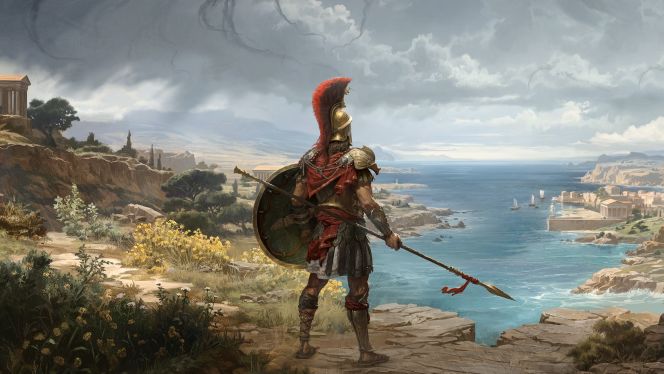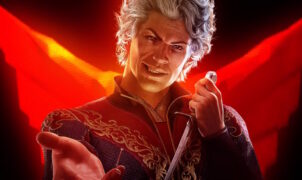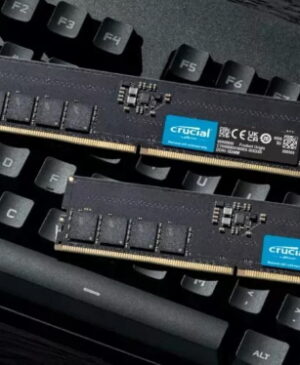Titan Quest quickly became the go-to action RPG for players who were growing weary of Diablo. Its stunning world design and the incredible freedom of 36 class combinations set it apart from competitors. While it lacked the depth of Blizzard’s iconic franchise, its versatility offered something unique that Diablo couldn’t match.
The early 2000s were defined by genre-defining RPGs like Diablo II and Baldur’s Gate II. In the shadow of these giants, Titan Quest emerged—not as a replacement, but as a remarkable alternative. Developed by the short-lived Iron Lore Entertainment, the game gained recognition for its accessible but rewarding gameplay, standing the test of time despite its studio’s early demise.
An Ancient World Brought to Life Across Three Civilizations
Released in 2006 under the THQ Nordic banner, Titan Quest set out to offer an ARPG experience different from the well-established Diablo II, which by then had already shaped the genre. Its storyline—where a Greek-born hero sets out to stop the return of ancient titans—didn’t revolutionize narrative design, but it provided a solid foundation for a game rich in exploration and combat. The project benefited from the input of industry veterans like Brian Sullivan, co-creator of Age of Empires, bringing valuable expertise to its development.
The gameplay embraced the traditional ARPG loop: traverse a vast map, clear zones of mythological threats, gain experience, and progress through ancient lands inspired by Greece, Egypt, and China. Visually, the game was ahead of its time, powered by a custom engine capable of rendering expansive 3D environments without interruption.
One of its more impressive technical feats was the seamless transition between open areas and underground dungeons—achieved with no loading screens—alongside procedurally generated enemy encounters. Yet perhaps the game’s most defining feature was its character customization system, which offered players an unprecedented number of build options.
A Class System That Puts You in Control
Unlike its genre peers that locked players into rigid class trees, Titan Quest introduced eight distinct mastery paths that could be mixed and matched to form entirely new archetypes. Each mastery brought its own set of active and passive skills, from brute-force melee to elemental magic, archery, or nature-based healing. Players were encouraged to combine any two to create a unique class tailored to their preferred playstyle.
For instance, selecting Defense and Warfare masteries gave rise to the Conqueror—a durable frontline warrior. Combining Hunter with Rogue yielded a swift and adaptable damage-dealer. Those interested in summoning and area damage could merge Earth and Nature to command elemental forces and mythical beasts in battle.
With 36 total class combinations available, replayability was one of the game’s strongest aspects. Even though the world map remained static, the enemy encounters changed dynamically, keeping each run fresh. Admittedly, dual-weapon swapping was often required to maximize builds, and the limited inventory space proved frustrating at times. Still, the randomized loot system was so rich and rewarding that it even outshined Diablo’s in many players’ eyes.
A Legacy That Refuses to Fade
Over the years, Titan Quest grew beyond its original form through four expansions. Immortal Throne took players into the depths of Hades; Ragnarok introduced Norse mythology and the challenge of facing Loki; Atlantis explored a legendary lost civilization; and Eternal Embers dove into the mystical world of ancient China. Sadly, Iron Lore shut down only two years after launch, managing to release just the first expansion. The remaining DLCs were developed by Digital Arrow.
Nevertheless, the series lives on. A full-fledged sequel, Titan Quest II, is currently in development. Until its release, the Anniversary Edition remains the best way to revisit the original. Available on Steam, it includes the base game and Immortal Throne, enhanced with modern improvements. The other three expansions must be purchased separately, but they significantly deepen the experience—and they’re highly recommended for those who want to explore everything this classic ARPG has to offer.
Source: 3djuegos









![[TGA 2025] Tomb Raider: Legacy of Atlantis: Another Remake of the First Game! [VIDEO]](https://thegeek.games/wp-content/uploads/2025/12/theGeek-Tomb-Raider-Catalyst-Legacy-of-Atlantis-Remake-Crystal-Dynamics-302x180.jpg)





Leave a Reply